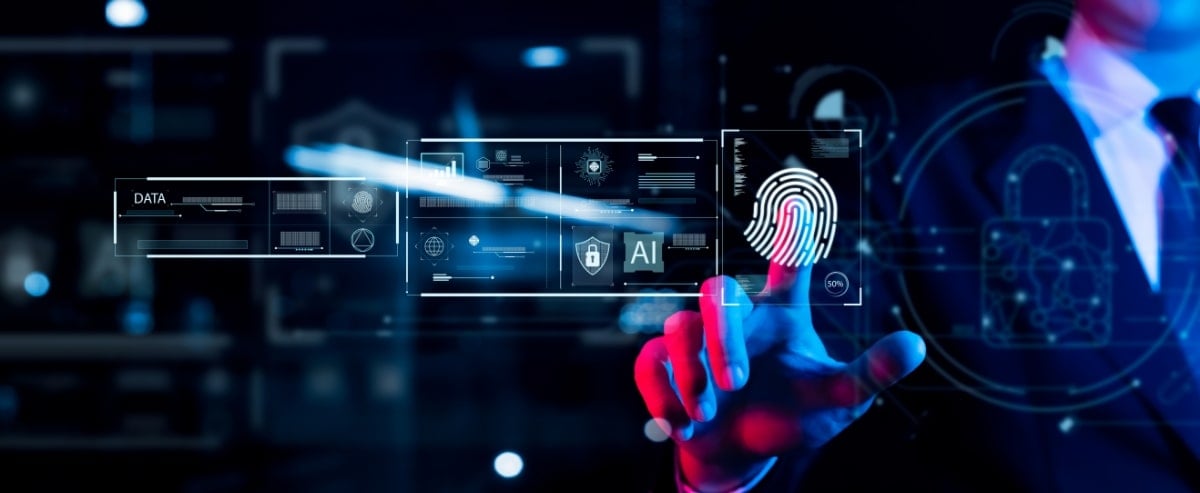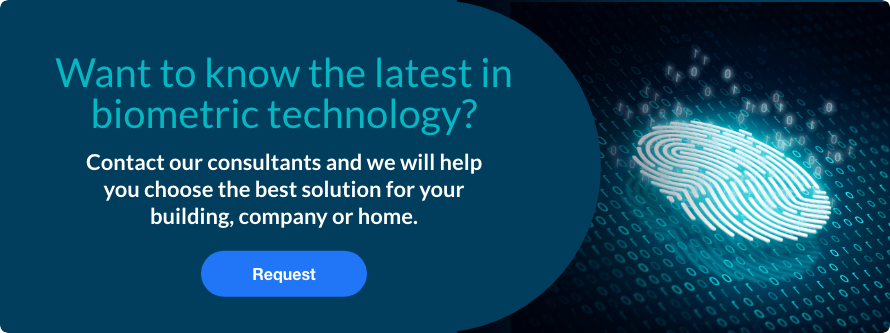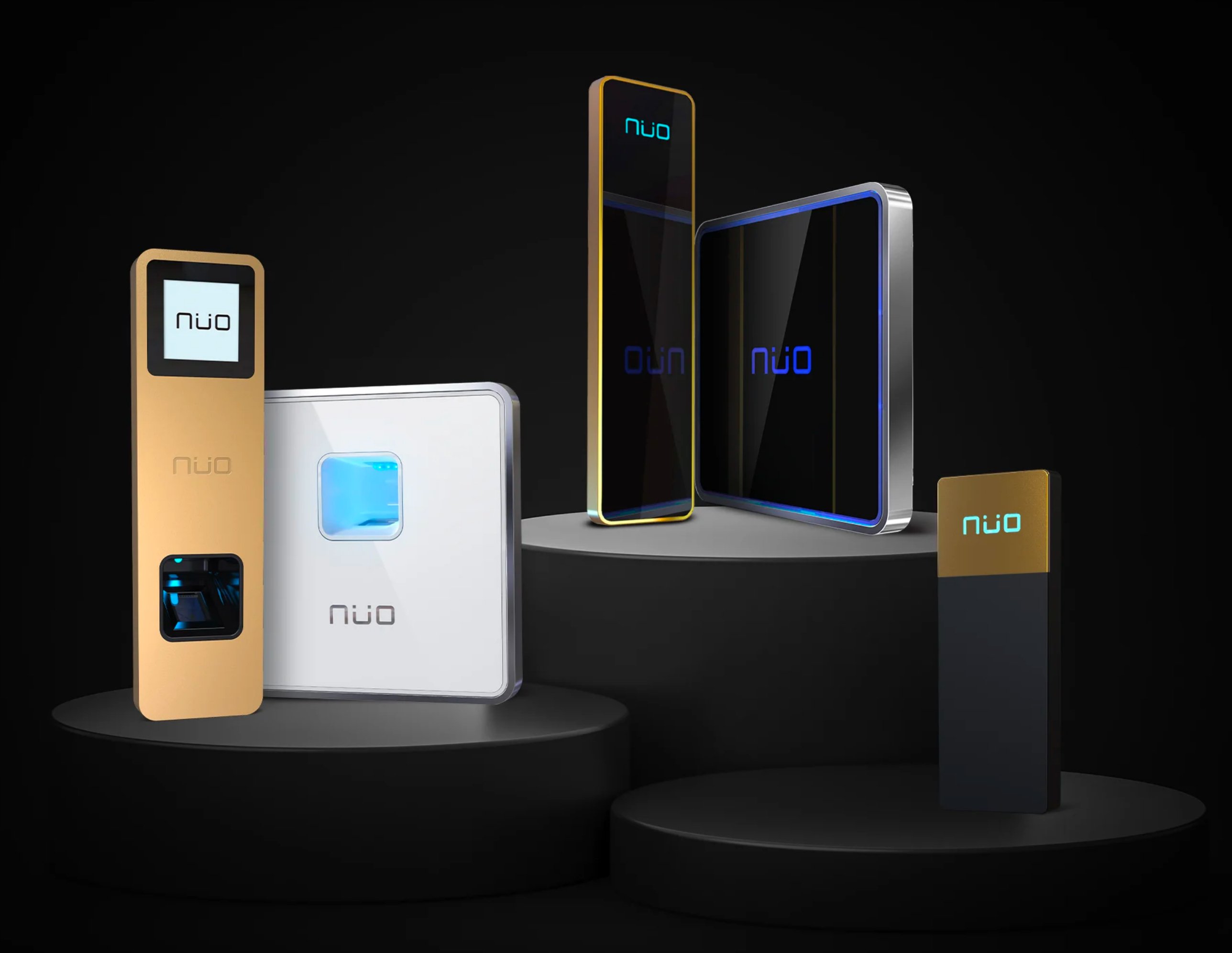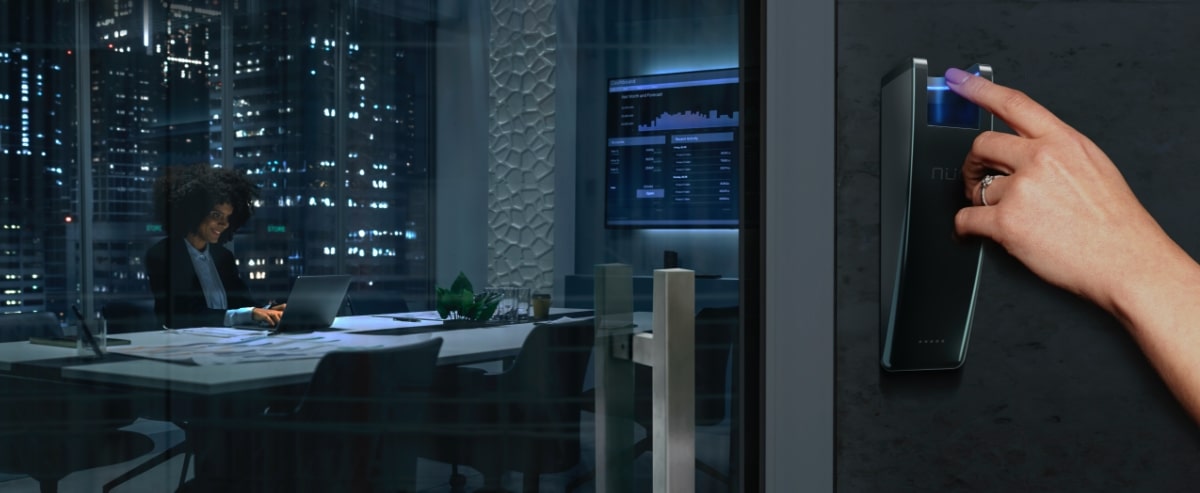Although it seemed like a futuristic concept until recently, today biometrics has broadened the possibilities when it comes to proving someone's identity.
Precise fingerprint reading or facial recognition, among other technologies, are already part of many people's daily lives, who use these parameters to safeguard the privacy and security of their businesses.
| You may be interested in: Why is using biometrics for security applications recommended? |
New privacy needs have led to the search for more secure technologies. In a context where data is becoming increasingly important for distributing services and products, the benefits of sophisticated biometrics are allowing better levels of efficiency than ever before.
Moreover, the rise of biometrics speaks directly to how companies are welcoming new security solutions based on this technology, which is also becoming more widely available to a variety of businesses.
What is biometrics and what is it for? What are the most secure and efficient technologies in this field today? What are its uses? What are the benefits of biometrics? We'll tell you everything you need to know in this complete guide.
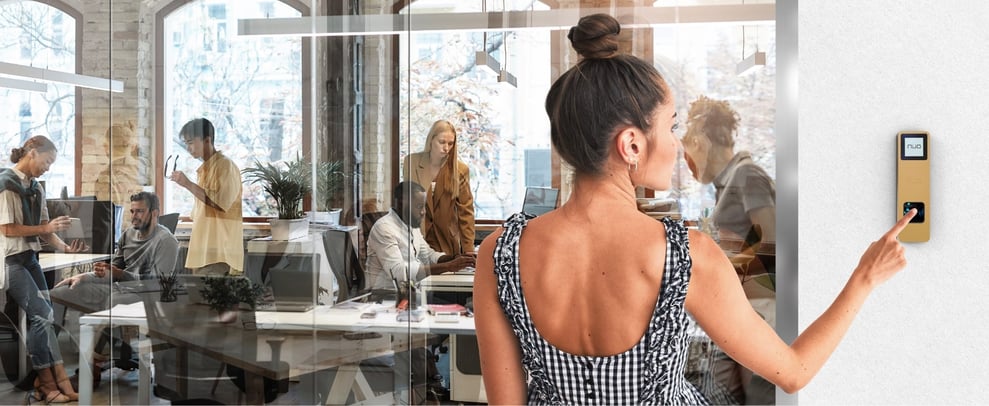
What is biometrics and what is it for?
Biometrics refers to the set of techniques used to identify people based on their physical, biological or behavioural characteristics.
So facial features, fingerprints, voice vibrations or iris characteristics are just some of the things used by biometrics for identification.
It's a means of detecting people's non-transferable and unique characteristics so that they can be used to unmistakably identify them.
History of biometrics

Although current biometrics is based on digital technologies with a high level of sophistication, its benefits have been recogniced since ancient times as part of identification systems.
Some of the most important milestones in this area include:
- Fingerprint signatures on clay tablets in the Babylonian civilization.
- Use of fingerprints as authentication by the Chinese Emperor Ts'In She (2nd century BC). Later (14th century) and also in China, the explorer Joao de Barro observed the use of palm prints among merchants and underage customers.
- In 1880, the British doctor Henry Faulds carried out the first attempt to approach the fingerprint from a scientific perspective, which he published in the journal "Nature". He proposed a method for cataloguing fingerprints, based on his insight that they were all unique and unrepeatable.
- Faulds' method was completed by Sir Francis Galton, laying the foundation for the science of forensic fingerprinting.
- Alphonse Bertillon developed an anthropometric system in 1883 that was called Bertillonage. He thereby expanded the possibilities for biometrics beyond the fingerprint, since it was based on data such as head and body measurements and other individual factors. However, this system was later discarded due to clear inaccuracies.
- The work of Ivan Vučetić led to creation of the first fingerprint-based system, used for police identification. Between 1901 and 1902, various police forces around the world adopted this system.
- Recognition based on iris patterns was being studied as early as 1936 by the ophthalmologist Frank Burch, although it did not become a reality until 1985 when Leonard Flom and Aran Safir decided to investigate in greater depth. In 1994, his research was the basis for John Daugman's work, who patented the first iris recognition algorithms. This system was taken a step further with the development of the IriScan, Inc. system by the Defense Nuclear Agency.

Types of biometrics
When asked what biometrics consists of, it's important to know that to be valid, the various types of biometrics must meet certain requirements:
- It must be universal (meaning every individual has them)
- Unambiguous (unique to each individual)
- Permanent over time and in all conditions
- Measurable.
We can find three types of biometric approaches that meet this criteria:
- Biological
This form of biometrics is based on the unique characteristics of the human body, which allow one individual to be distinguished from another. Here we find parameters such as saliva, urine, blood or DNA tests that are often used and analysed by medical or forensic teams.
Biometrics from the morphological point of view focus on the unique shape of some elements of the human body for identification. The shapes of the hands, the patterns of veins, facial, voice or eye recognition (iris and retina) all belong to this category. - Morphological
Biometrics from the morphological point of view focuses on the unique shape of some elements of the human body for identification. The shapes of the hands, the patterns of veins, facial, voice or eye recognition (iris and retina) all belong to this category.
You may be interested in: Examining Facial Recognition
This is also the category fingerprints belong to: unique and non-transferable, which is the most secure and reliable biometric identification system today.It is also the most secure method for access control systems. The latest generation fingerprint readers are multispectral optical recognition systems capable of penetrating beyond the superficial layers of the epidermis and through dirt or other surfaces (for example, latex gloves).
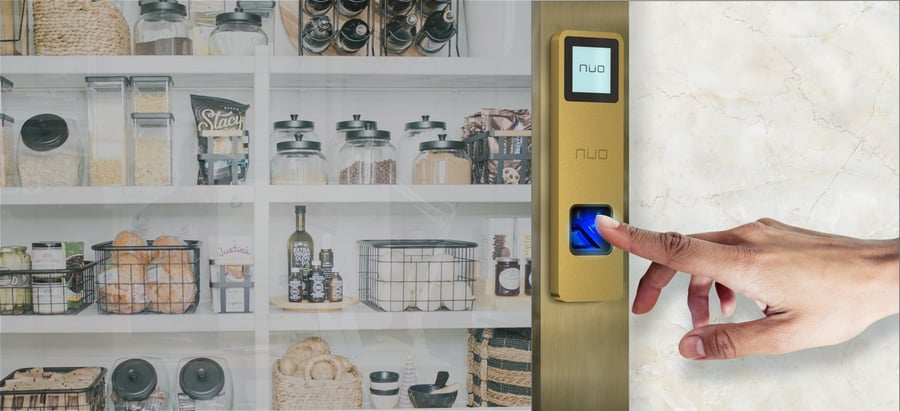
By comparing with multiple fingerprints recorded in the memory bank, the system grants or denies access following a totally safe and precise system, which also creates a log with the date, time, location and identification of the person requesting access. - Behavioural
Behavioural biometrics looks at unique actions by individuals that through artificial vision and other technologies may successfully identify them. How one walks or sits, the dynamics of a signature, how keys on a keyboard are pressed or gestures made, are just some examples of this form of identification.
However, behavioural biometrics is less reliable or stable over time, as it can be influenced by specific situations or contexts (being subject to stress for example).
Main benefits of biometrics
UsabilityThe continuous development of new technologies is often a barrier for those who, due to lack of time, interest or other reasons, end up not knowing how to use new devices or technological advances. In contrast, biometrics does not require advanced knowledge or extensive training to use.. The figures for the adoption of smartphones with biometrics among users speak precisely of this: between 2016 and 2020 the number of phones that used some type of biometric system (for example, the fingerprint) grew from 68 to 80% in the markets of North America, Western Europe and Asia. Thus, incorporating technologies such as fingerprint readers minimices the problems that often appear when implementing a new technology. |
|
Saving time at work and greater convenience on a daily basisChoosing efficient and intuitive biometric technologies can reduce some inefficiencies and lack of productivity in companies. In addition, it is a very convenient biometric technology to use during the day, since it cannot be forgotten, lost or stolen. A user always carries their fingerprint with them. |
|
No keys or cards are necessary son necesarias claves ni tarjetasPasswords and keys can be forgotten. Cards are lost or neglected. Biometrics, which uses characteristics unique to each individual, manages to overcome these obstacles. |
|
Greater security in access controlToday, the most secure access control systems use biometric applications, due to their high capacity to withstand the most common types of fraud. In this sense, fingerprint-based systems stand out, with competitive prices that have already democratised this option. Other systems are also recommended that incorporate verifications of different types, such as fingerprints together with high-security identification cards for two-factor security. |
| You may be interested in: Biometric Access Control: What It Is and How to Implement It |

Uses of biometrics
Biometrics is being integrated into a wide variety of sectors and industries, boosted by the advantages it offers and becoming part of everyday life for citizens.
Payments, security and access control, among others, benefit from technological developments in this area, which are leading biometrics to become one of the most secure paradigms.
| You may be interested in: Benefits of Biometrics Applied to Logistics Security |
Some of the key uses of biometrics today include:
- Private documents:
Sectors such as banking are putting biometrics into practice to verify the identity of those who access confidential information. Biometric identification is also common for banking apps downloaded by their customers. - Passports and ID cards:
For example, in the United States, the electronic version of the passport incorporates information about each individual's iris patterns, fingerprint and their digital photograph. The United Kingdom is another example, which since 2018 was already planning to invest 96 million pounds in biometric technologies for citizen identification, according to the European report: Biometric technologies: a key enabler for future digital services
This section is also directly related to border controls, which also make use of biometrics to improve their processes. Thus, figures from Statista calculate that more than half of airports worldwide will have implemented biometric systems in 2024.
- Medical sector:
Biometrics are also being incorporated here to improve the security of sensitive data such as the medical history of patients. Thus, fingerprint readers and other biometric technologies are already common in some hospital facilities, both to verify the identity of a patient and that of workers who have access to confidential information.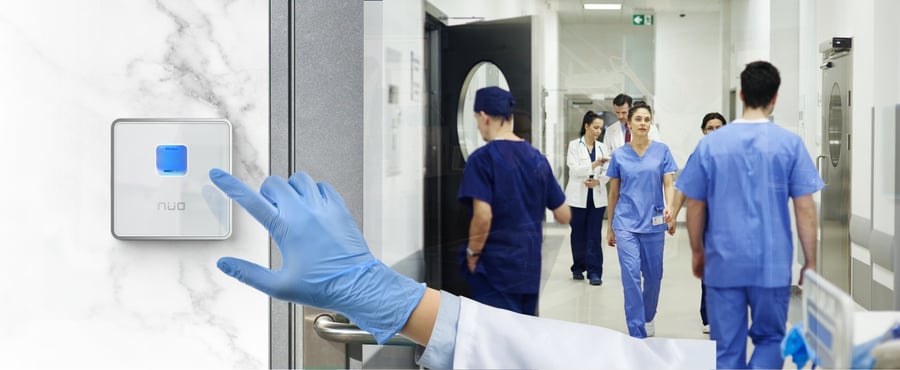
| You may be interested in: These Are the Best Fingerprint Readers for Your Lab |
- Law enforcement:
This is another of the sectors that is highly invested in incorporating biometrics into their processes. As we have already seen, it was precisely the developments made by forensic and police authorities that marked some of the fundamental milestones in the history of biometrics.
Today, the authorities have access to highly sophisticated technologies to verify identities, highlighting the fingerprint as the biometric method whose efficiency has been maintained and confirmed over time.
- Private security of companies, businesses and homes and access control systems:
In the search for ever more secure and efficient systems, the access control sector has also set its sights on the benefits of biometrics. In this context, the latest generation fingerprint readers stand out, which, as we have explained above, currently represent the safest and most optimised alternative for protecting facilities against fraud.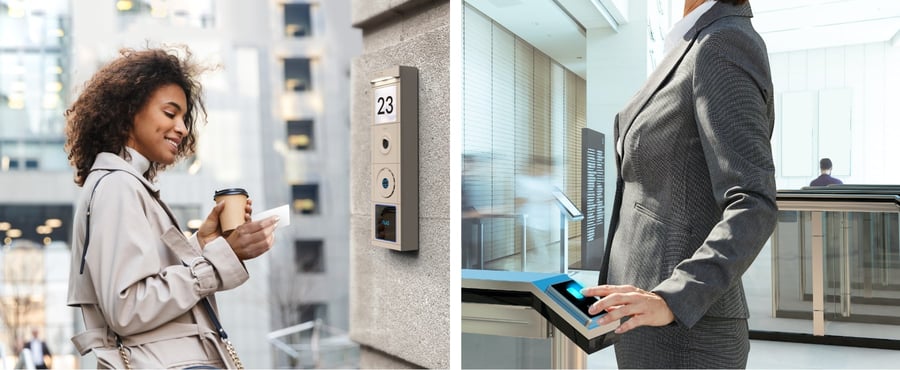

This is the case of NÜO Planet, where we have opted for wired, centralised and fingerprint-based systems (which can also be coordinated with other methods such as cards or smartphones), generating the safest and most effective option for access control today.
| You may be interested in: Types of Access Control That, as an Installer, You Should Know About |
Do you want to know more about how biometrics is revolutionising access control? At NÜO Planet we can help you. Download our free ebook on Security Trends in Access Control or contact us to find out more about what types of systems exist and which one best suits your company's needs.
| You may be interested in: Biometric Access Control: What It Is and How to Implement It |
Escrito por: NÜO Planet
Categorías: Biometrics
